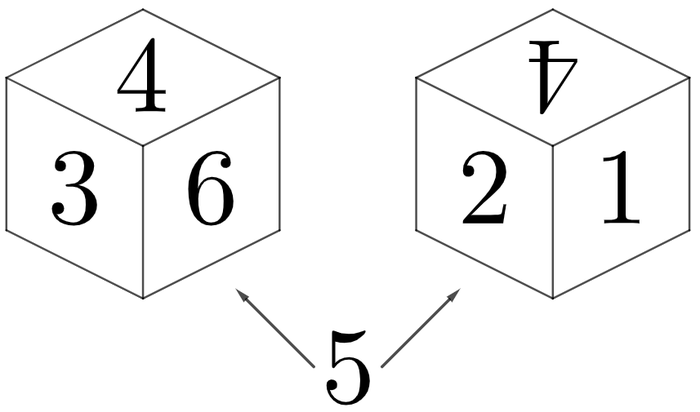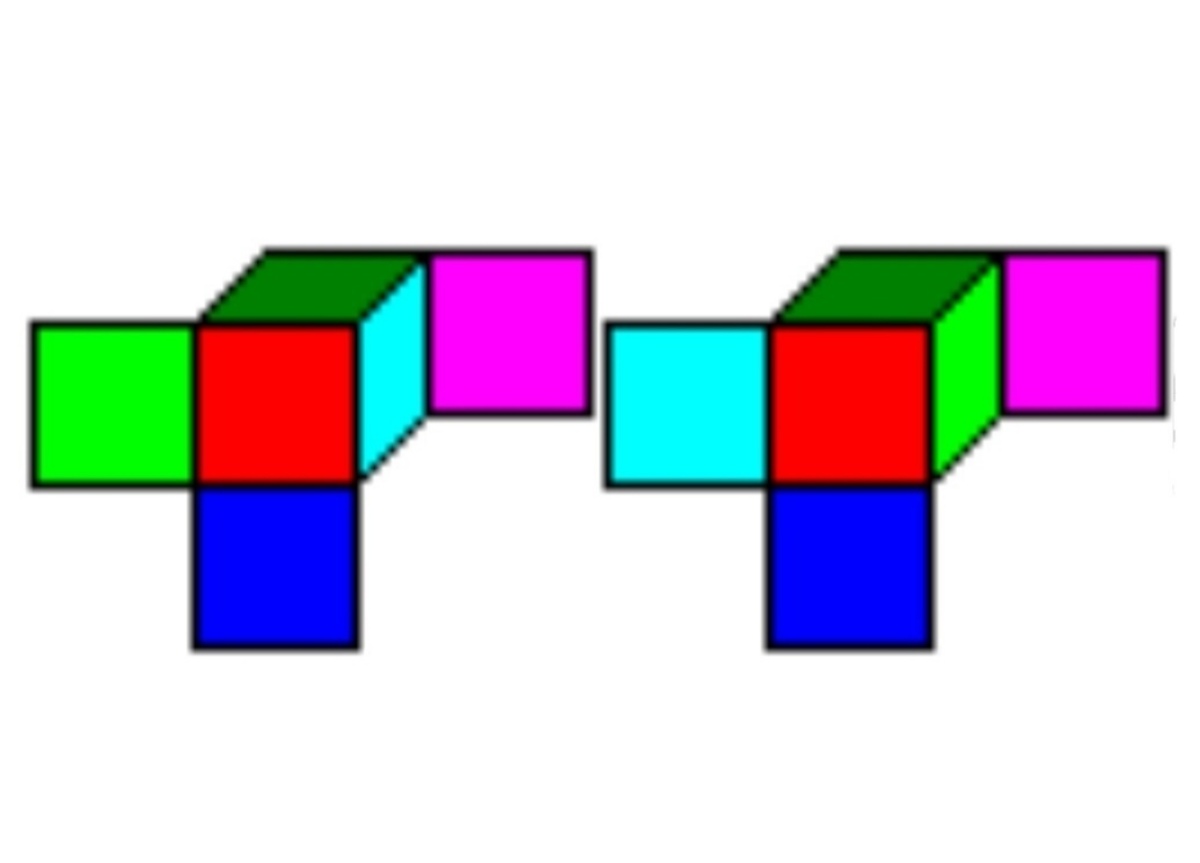Batman's Two-Face-Four-Face Probability
Suppose we start with one fair die with no labels, and we label each of the faces with a distinct integer between and . When the die is rolled, numbers that are facing neither up nor down altogether yield the sum. For example, if the rolled die has the faces labeled as shown below, then the sum is . Other possible sums are (from ) and (from ).
 Both diagrams illustrate two distinct views on a labeled die after it was rolled. The left shows three labeled faces of a die. If we rotate it
as shown on the right, the other two shown faces are
and
. Since
is facing up and
is facing down, those numbers are not counted toward the sum.
Both diagrams illustrate two distinct views on a labeled die after it was rolled. The left shows three labeled faces of a die. If we rotate it
as shown on the right, the other two shown faces are
and
. Since
is facing up and
is facing down, those numbers are not counted toward the sum.
What is the probability of labeling the die, such that it has at most two distinct possible sums of numbers?
This section requires Javascript.
You are seeing this because something didn't load right. We suggest you, (a) try
refreshing the page, (b) enabling javascript if it is disabled on your browser and,
finally, (c)
loading the
non-javascript version of this page
. We're sorry about the hassle.

There are 5 ways to get at most 2 distinct sums. The total sum on a die is 1+2+3+4+5+6 = 21. If the wall-sums are m, m and n (wall-sum : the total when the numbers on the four vertical faces on a die are added together), then these would be complemented by 21-m, 21-m and 21-n as the updown-sums, for which x+x+y = 21 with x = 21-m and y = 21-n.
21 = y + x + x
= 3 + 9 + 9
= 5 + 8 + 8
= 7 + 7 + 7
= 9 + 6 + 6
= 11 + 5 + 5
since the smallest updown-sum is 1+2 = 3 and the biggest updown-sum is 6+5 = 11.
Total distinct triple pairings
= 6! / [(2!2!2!) x 3!]
= 15
P(labeling with at most 2 distinct sums)
= 5 / 15
= 1 / 3